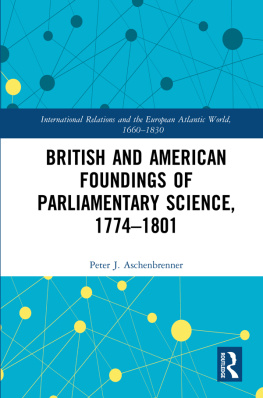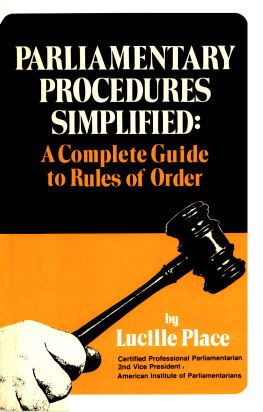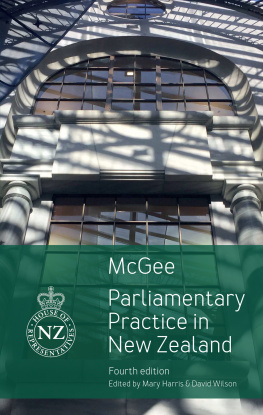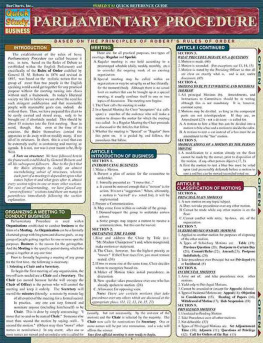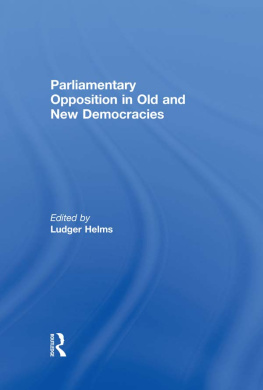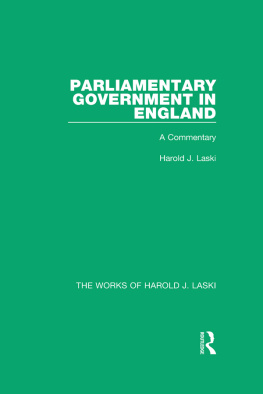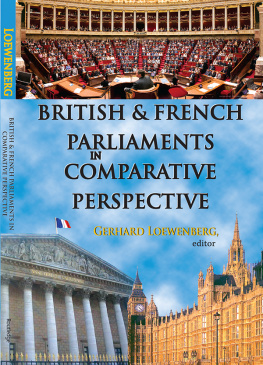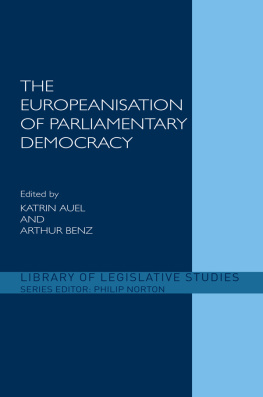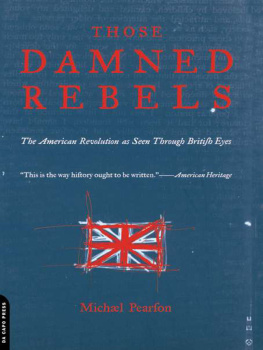British and American Foundings of Parliamentary Science, 17741801
Upon declaring independence from Britain in July 1776, the United States Congress urgently needed to establish its credentials as a legitimate government that could credibly challenge the claims of the British Crown. In large measure this legitimacy rested upon establishing the procedural and legal structures upon which all claims of governmental authority rest. In this book, Aschenbrenner explores how the nascent United States rapidly built up a system of parliamentary procedures that seemed to borrow heavily from the British government it sought to replace in North America. He surveys the work of British investigators John Hatsell and Jeremy Bentham in the field of parliamentary science, a term that Thomas Jefferson was the first to employ in the nineteenth century. Jefferson drew on the writings of the Chief Clerk of the House of Commons, John Hatsell, to comment on the codified procedures of the United States Senate. Jefferson was serving as the presiding officer of that body during his term in office as Vice-President (17971801). Published in 1801, Jeffersons Manual of Parliamentary Practice for the Use of the Senate of the United States presents rules, instances, citations and commentary as modern readers would expect them to appear. Jefferson relies heavily on British political and parliamentary history. His interest in the founding of the United States is marginal. Jefferson concluded that an idealised view of parliamentary competence served as the most useful frame for his Manual. Comparison of the work of the House of Commons in the study interval (17741801) with that of the Continental Congress (17741788) and the United States Senate (17891801) reveal remarkable similarities between the ambitions of these institutions as they struggled to adapt their political processes to meet the changing national and international circumstances of the late-eighteenth century.
Peter J. Aschenbrenner holds a research appointment at Purdue University in West Lafayette, Indiana, in the Department of History as an adjunct professor.
International Relations and the European Atlantic World, 16601830
Series Editor: Jeremy Black
University of Exeter, UK
Demonstrating the centrality of international relations to global developments, this new series offers a platform for the publication of scholarly research based upon a variety of historical approaches and contrasting geographical and chronological perspectives. It includes not only traditional archive-based studies but also more conceptual works drawing on the perspectives of International Relations theory, in order to encourage a rethinking of the subject and thus of approaches to global history.
Covering the long-eighteenth century, it will draw together studies from a variety of historically based disciplines (cultural, political, literary, visual and military) to explore subjects fundamental to the political, economic and cultural development of the Atlantic world. In particular, it will underline the fundamental role of the Atlantic Ocean acting as conduit for ideas and exchange, both within Europe and on a global scale. Books in the series will further understanding of how theory and practice of European international relations related to the wider world, and how diplomacy actually functioned in a rapidly changing political environment. The relationship between policy and strategy in the European Atlantic system, the role of commerce both as business and ideology will all be covered, with specific reference to the great events of the period including Anglo-French relations, the French and American revolutions, developing notions of colonialism and imperialism, and the Napoleonic Wars and their aftermath.
Gender and Politics in Eighteenth-Century Sweden
Queen Louisa Ulrika (17201782)
Elise M. Dermineur
British and American Foundings of Parliamentary Science, 17741801
Peter J. Aschenbrenner
British and American Foundings of Parliamentary Science, 17741801
Peter J. Aschenbrenner

First published 2018
by Routledge
2 Park Square, Milton Park, Abingdon, Oxon OX14 4RN
and by Routledge
711 Third Avenue, New York, NY 10017
Routledge is an imprint of the Taylor & Francis Group, an informa business
2018 Peter J. Aschenbrenner
The right of Peter J. Aschenbrenner to be identified as author of this work has been asserted in accordance with sections 77 and 78 of the Copyright, Designs and Patents Act 1988.
All rights reserved. No part of this book may be reprinted or reproduced or utilised in any form or by any electronic, mechanical, or other means, now known or hereafter invented, including photocopying and recording, or in any information storage or retrieval system, without permission in writing from the publishers.
Trademark notice: Product or corporate names may be trademarks or registered trademarks, and are used only for identification and explanation without intent to infringe.
British Library Cataloguing-in-Publication Data
A catalogue record for this book is available from the British Library
Library of Congress Cataloging-in-Publication Data
A catalog record for this book has been requested
ISBN: 978-1-472-47265-6 (hbk)
ISBN: 978-1-315-57005-1 (ebk)
Typeset in Sabon
by Apex CoVantage, LLC
Ask me Nestor, great thou art, Could Odysseuss mind
The fall of Troy design and by stratagem sublime?
With this counsel I answer Nestors plea.
With me send one more, for two together better see.
Daring perilous arenas, surveilling foes as friends,
Teasing hostile promise from the darkness night pretends.
Iliad X:220226
Contents
As the 50th Clerk of the House of Commons, I write this under the gaze of two portraits of distinguished predecessors. At one end of my office is Nicholas Hardinge, painted by Allan Ramsay. Quill pen in hand, head resting on his left hand, he looks out at the viewer with a gentle and quizzical glance. It was Hardinge who arranged for the printing by Samuel Richardson of the first 23 volumes of the Journals of the House of Commons. His left elbow rests on two of these hallowed volumes. One long wall is largely taken up by sessional volumes of the Journal, which have now reached No 267. On the other wall hangs a vast portrait of John Hatsell by James Northcote. More than life size, Hatsell sits upright facing the viewer with a stern look. His left elbow rests on a pile of books, possibly Journal volumes and his Precedents of Proceedings in the House of Commons. A copy of the Votes is also prominently displayed. There is no picture of Jefferson, alas, but there are several editions of the Manual on the bookshelves. The Princeton University Press edition of Jeffersons Parliamentary Writings nestles up to a reprint of Hatsells Precedents, close to a complete set of Erskine Mays Treatise on The Law, Privileges, Proceedings and Usage of Parliament from its first edition in 1844 to the 24th edition of 2011. Above is Ernest Steinthals translation from the German of Josef Redlichs The Procedure of the House of Commons, with a long Preface by Sir Courtenay Ilbert, beginning so memorably with the unintentionally dismissive sentence It has been left to an Austrian scholar to accomplish a piece of work which some competent Englishman ought to have undertaken long ago

